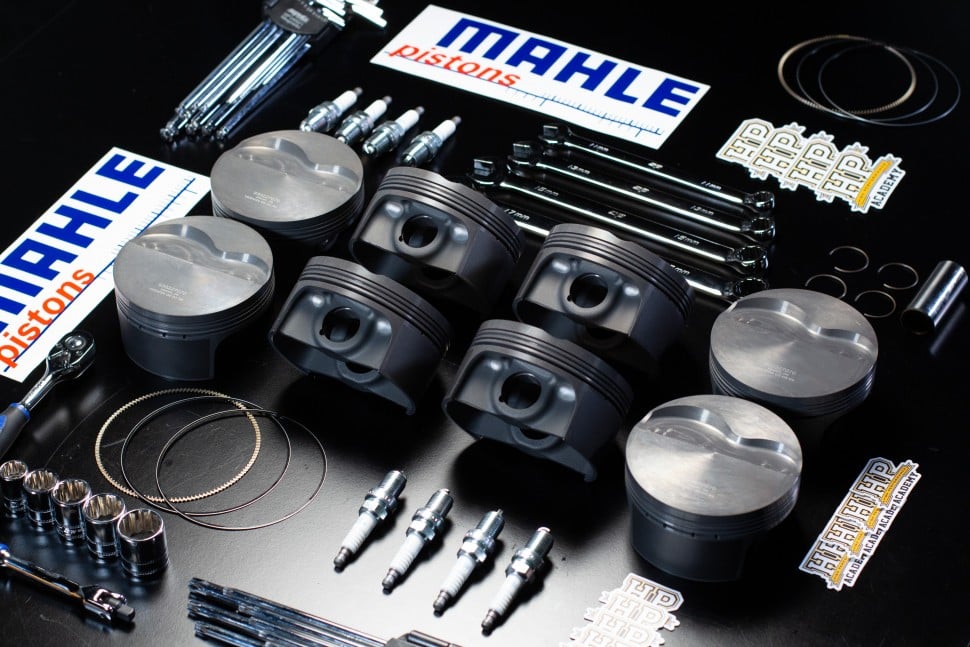| 00:00 |
While gears need to be lubricated and protected in any geared transmission, automatic transmissions have additional components like wet clutches that need to be kept within a reasonable operating temperature range.
|
| 00:12 |
The torque converter also generates a lot of heat as fluid is pumped, circulated, and slip occurs.
|
| 00:19 |
A common OEM method of transmission fluid cooling involves water-to-transmission fluid cooling in a segmented portion of the vehicle's radiator assembly.
|
| 00:29 |
The heat exchanger uses engine coolant or water to bring the transmission fluid temperature closer to coolant temperature.
|
| 00:36 |
To achieve similar results with different packaging, some vehicles water-cool transmission fluid using a transmission filter housing-based heat exchanger.
|
| 00:44 |
Water-to-transmission fluid coolers have the dual benefit of warming the transmission up quicker which helps it perform more smoothly and efficiently earlier in each drive cycle and cooling the system back down when transmission fluid temperature exceeds engine water temperature during aggressive driving, towing conditions, or even stop-and-go traffic on a summer day.
|
| 01:08 |
High-performance and tow package vehicles often come factory-equipped with an air-to -transmission fluid cooler in addition to the water-to-transmission fluid cooler.
|
| 01:20 |
Air-to-transmission fluid coolers generally can't help warm the transmission up since transmission fluid will typically be at or over ambient air temperature on a cold start of the vehicle, but this style of cooler does a great job of reducing fluid temperatures when they'd otherwise get too hot.
|
| 01:39 |
The excellent cooling performance comes from the nature of heat exchangers which work based on the difference in temperature between the item being cooled and the item providing the cooling.
|
| 01:51 |
Since the water temperature in the engine cooling system is often in the 90°C range, we can't expect a water-to-transmission fluid cooler to bring transmission fluid temps down below that level.
|
| 02:04 |
On the other hand, if it's only 20°C outside, the air acting on an air-to -transmission fluid cooler can help bring transmission fluid temperature down much further and potentially faster.
|
| 02:17 |
Selecting cooler style and size comes down to packaging, vehicle use, environment, cooling needs, and more.
|
| 02:26 |
Generally speaking though, heat generation will increase with more torque, increased vehicle or load weight, higher ambient temperature, more aggressive driving, and more slip.
|
| 02:39 |
It's also worth keeping in mind that at higher altitudes, air-to-transmission fluid coolers operate less effectively.
|
| 02:47 |
While it may make sense to remove the water-to-transmission fluid cooler in a race application in favor of using only an air-to-transmission fluid cooler, or no coolers potentially on a vehicle only racing for a few seconds at a time, the warming function that a water-to -transmission fluid cooler provides after a cold start really helps transmission drivability.
|
| 03:12 |
It's something to consider retaining on street vehicles, and any vehicle operated in a cold environment.
|
| 03:18 |
Water-to-transmission fluid coolers don't require airflow, so they can be placed almost anywhere we can mount them securely, plumb hoses to them, and still bleed our coolant system.
|
| 03:30 |
Air-to-transmission fluid coolers, on the other hand, require airflow to operate efficiently, though they can still have some cooling effect as long as the air surrounding them is cooler than the transmission fluid passing inside.
|
| 03:43 |
As with most coolers, a bigger unit will typically have more cooling potential, but the quality of construction and the design are also key factors, so choose wisely.
|
| 03:54 |
In terms of air-to-oil coolers, also keep in mind, the more coolers we stack up that require airflow, the more the performance of each is likely to degrade as external airflow through them is reduced.
|
| 04:08 |
For example, if we have a truck with 4 coolers stacked front-to-back, say a front-mount intercooler followed by an AC condenser, followed by a transmission cooler, then a radiator, stacking an additional tranny cooler or replacing the stock one with a much bigger unit is going to reduce the performance of the engine's radiator by blocking more airflow to it.
|
| 04:31 |
I won't get into the details of aerodynamics here, but the radiator wouldn't necessarily be the only item to suffer, the AC condenser and intercooler may suffer too if a new tranny cooler causes an air pressure increase on the backside of those other coolers.
|
| 04:46 |
As with most things, we can discuss each item individually, but ultimately those individual items all slot into a larger system and it all needs to work together as a unit, so we should always try to keep that in mind when selecting each component.
|
| 05:03 |
With that covered, let's quickly touch on the main takeaways from this module before moving on.
|
| 05:10 |
Automatic transmissions generate a lot of heat during operation.
|
| 05:14 |
To combat this, OEMs generally use water -to-transmission fluid coolers to keep transmission fluid temperature closer to coolant temperature.
|
| 05:24 |
This is also useful for bringing a transmission up to temperature after cold starts.
|
| 05:31 |
Air -to-transmission fluid coolers are often used in high-performance and tow -package vehicles, and with the right placement and or ducting can be very effective in keeping transmission temperatures low in demanding environments.
|
| 05:46 |
Upgrade options include adding on to the stock coolers or replacing them.
|
| 05:51 |
The cooler size and style that's right for your project depends on packaging, vehicle use, environment, and cooling needs.
|





